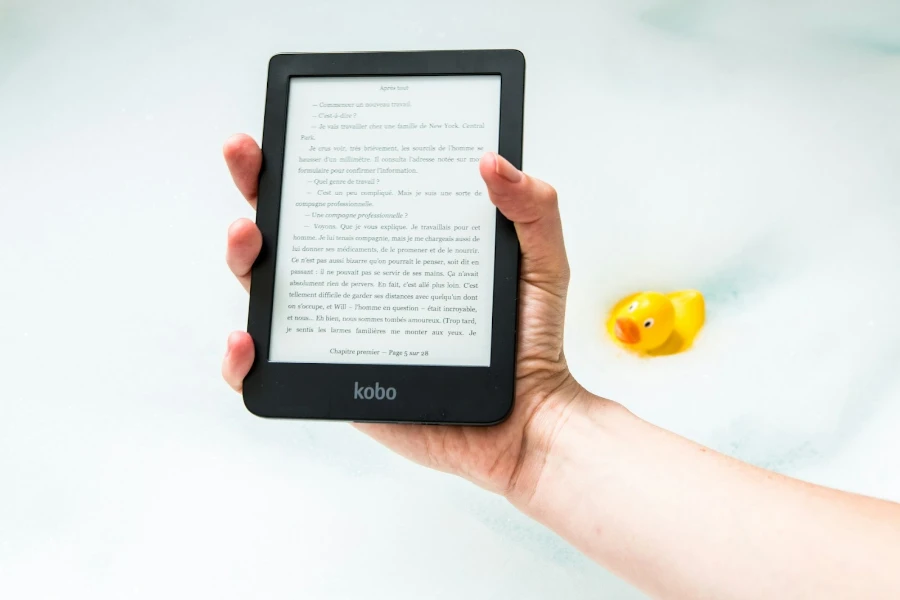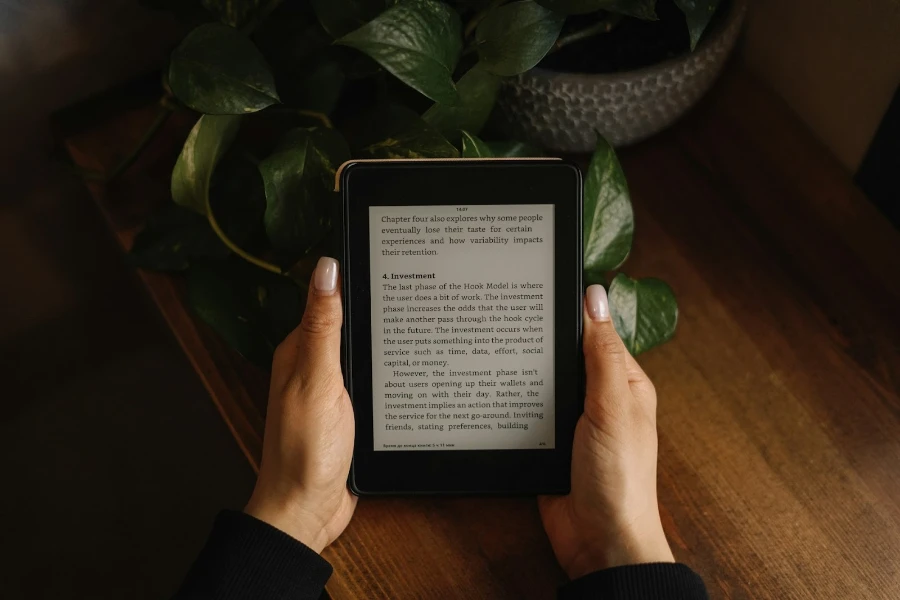The way we consume literature has undergone a profound transformation over the years. From traditional paperbacks to digital formats, reading has become more accessible and adaptable to modern lifestyles. E-readers are a product of this evolution, offering a digital platform for books that fits seamlessly into our tech-centric lives.
But the big question is, are e-readers worth the investment? That really depends on how dedicated a person is to reading, as well as their budget. Here, we will discuss the benefits of e-readers and factors to consider before purchasing.
Table of Contents
Market for e-readers
Benefits of e-readers
Factors to consider before investing in an e-reader
Are e-readers worth the investment?
Market for e-readers
The e-reader market was valued at USD 9.62 billion in 2022 and is expected to reach USD 16.69 billion by 2030, growing at a compound annual growth rate (CAGR) of 7.13% between 2023 and 2030.
There are two major segments in the e-reader market: e-ink and LCD. Market analysts predict that e-ink e-readers will dominate. Therefore, all manufacturers of e-readers are directing their efforts toward developing devices with e-ink screens. This focus is driven by the advantages of e-ink, such as lower power consumption and enhanced text visibility, making it a preferred choice for creating cutting-edge e-reader devices.
Benefits of e-readers
An e-reader, short for electronic reader or e-book reader, is a digital device designed specifically for reading digital versions of books and other written materials. E-readers aim to replicate the reading experience of traditional paper-based books while providing additional features and advantages associated with digital technology.
Convenience and portability
One of the primary advantages of e-readers is their unmatched convenience and portability. With an e-reader, you can carry an entire library on a device that weighs a fraction of what a stack of physical books would. This is particularly beneficial for avid readers or those who enjoy reading on the go, such as during a commute or while traveling.
Extensive library in your pocket
E-readers provide access to a vast and diverse digital library at your fingertips. The ability to download and store multiple books on a single device eliminates the need to carry a collection of physical books, enhancing the overall reading experience.
E-ink displays and eye comfort
E-readers commonly feature electronic ink (e-ink) displays, a technology designed to mimic the appearance of traditional paper. Unlike the backlit screens of tablets, e-ink displays reduce eye strain and provide a more comfortable reading experience, especially during extended sessions. This aspect of e-readers is a critical factor for those who prioritize eye health.
Battery life
Another significant advantage of e-readers is their impressive battery life. E-ink displays consume power only when the screen is refreshed, allowing e-readers to last for weeks on a single charge. This is a stark contrast to many tablets and smartphones, which often require daily or even more frequent charging. The long battery life of e-readers makes them attractive to users who want a low-maintenance device.
Customization and accessibility features
E-readers come equipped with features that enhance the reading experience. Adjustable font sizes, font styles, and background colors allow users to customize the appearance of text according to their preferences. Additionally, many e-readers offer built-in dictionaries, note-taking capabilities, and even integration with audiobooks, providing a versatile platform for readers of all kinds.
Cost savings
While the initial investment in an e-reader might seem significant, it can lead to long-term cost savings for avid readers. E-books are often more affordable than their physical counterparts, and many classic books are available for free in digital formats. Over time, the cumulative savings on book purchases can offset the initial cost of the e-reader.
Environmental impact
E-readers contribute to sustainability efforts by reducing the demand for paper and ink associated with traditional book production. While the production and disposal of electronic devices have their own environmental implications, the long lifespan and potential for digital libraries to replace physical ones can make e-readers a more environmentally friendly choice for readers who are conscious of their ecological footprint.
Factors to consider before investing in an e-reader

Investing in an e-reader can significantly enhance a person’s reading experience, but it’s essential to consider several factors before deciding to purchase one.
- Purpose of use: Understand the primary reason for getting an e-reader. If the focus is mainly on reading books, a dedicated e-reader is an excellent choice. However, those who want a device for a broader range of activities, such as web browsing, gaming, or watching videos, might lean towards a tablet. Consider the trade-off between e-readers and tablets. E-readers are designed specifically for reading, with features like e-ink displays that reduce eye strain and offer long battery life. On the other hand, tablets offer more versatility but may not provide the same comfort for extended reading sessions. Want a more in-depth comparison between e-readers and tablets? Read more here.
- Display technology: Pay attention to the display technology used in the e-reader. E-ink displays mimic the appearance of paper and are known for their reduced glare and eye-friendly qualities. However, a tablet with an LCD or OLED screen may be more suitable for those who prefer a color display for reading graphic novels or magazines.
- Size and weight: Consider the size and weight of the e-reader, especially if you plan to carry it with you regularly. E-readers are generally more compact and lightweight than tablets, making them convenient for on-the-go reading. There is a range of sizes to accommodate different preferences.
- Battery life: Evaluate the battery life of the e-reader. E-ink displays are known for their power efficiency, allowing e-readers to last for weeks on a single charge.
- Content ecosystem: Consider the e-reader’s content ecosystem. Some e-readers are tied to specific platforms, while others offer more flexibility. Make sure the e-reader supports the e-book formats you prefer and provides easy access to a diverse range of books in your preferred genres.
- Storage capacity: Determine the storage capacity of the e-reader. While many e-readers have ample internal storage, some models may also support external storage options, such as microSD cards.
- Built-in features: Explore the additional features offered by the e-reader. Many e-readers have built-in lights for reading in low-light conditions, adjustable font sizes and styles, dictionaries, note-taking capabilities, and audiobook integrations. Consider which features are essential for individualized reading preferences.
- Budget: E-readers come in a range of price points, and a person’s budget will influence the available features and specifications. Remember that many e-reader options have budget-friendly features like access to downloading library books, which can offset the upfront costs. Ensure consumers are aware of this when making purchasing decisions.
Are e-readers worth the investment?

In the debate over whether e-readers are worth the investment, the answer depends on individual preferences and reading habits. For many, the convenience, portability, and enhanced features of e-readers make them a valuable addition to their reading experience. The cost savings over time, combined with the positive environmental impact, add further weight to the argument in favor of e-readers.
As technology continues to advance, e-readers are likely to evolve further, offering even more sophisticated features and a seamless integration of digital literature into our daily routines.
It’s worth noting that some users find a middle ground by owning an e-reader and a tablet, using each device for its strengths in different scenarios. As a business owner, you don’t necessarily have to choose between which devices to carry. Still, you should know which ones appeal to which customers and be able to guide them to the right choice.








